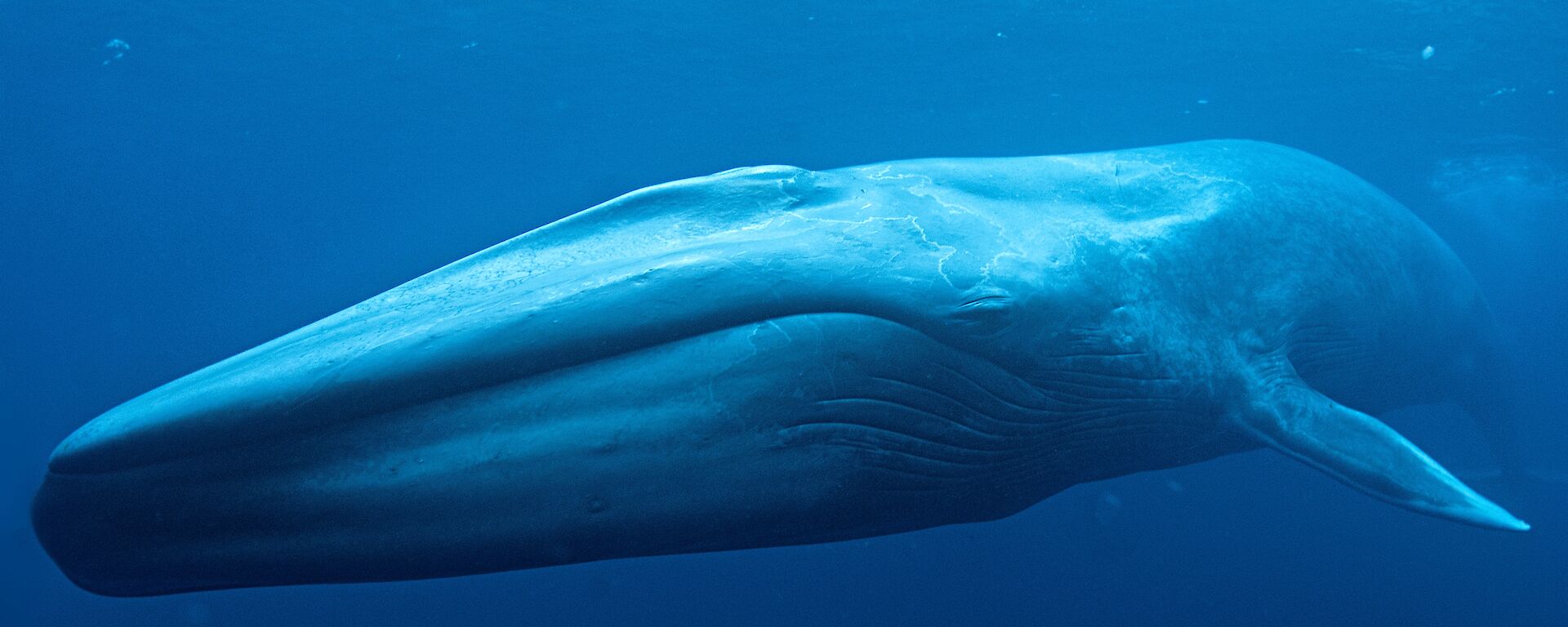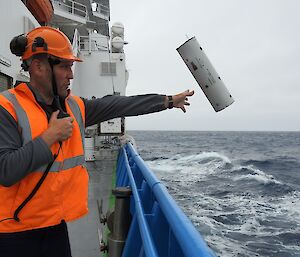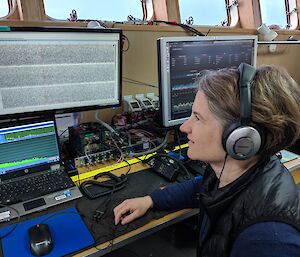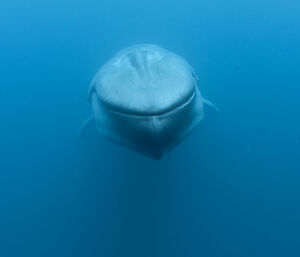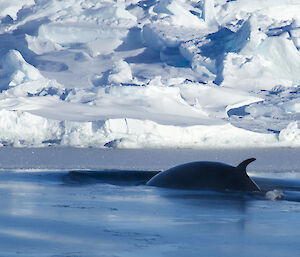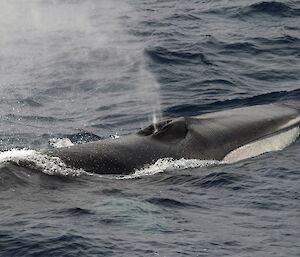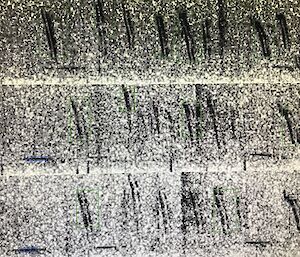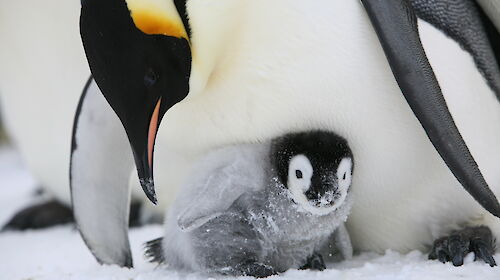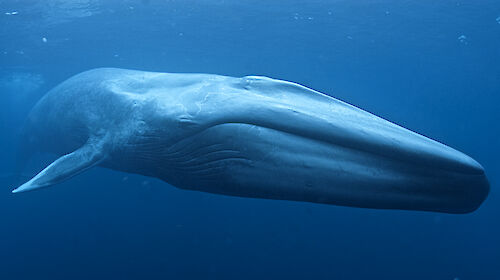“However, if you were in the water next to a singing whale you would likely feel the sounds as vibrations,” Dr Miller said.
“If you’ve ever been in traffic next to someone with a very loud sound system, that’s what the vibrations would feel like – you’d be feeling the bass.”
First estimates of sound power
While the so-called ‘D-calls’ of blue whales and ‘40 Hz’ calls of fin whales have been recorded around the world for decades, a study published in Frontiers in Marine Science gives the first estimates of the power or ‘source level’ of five different types of blue and fin whale calls in the southern hemisphere.
“Blue and fin whales were hunted to the brink of extinction and remain extremely rare, even today, so they are very hard to find by visual observation alone,” lead author Dr Miller said.
“Being able to listen for these animals gives us a powerful tool to detect when and where they occur and to monitor change over time, and in the future it may allow us to estimate how many whales there are.”
“Understanding the power of their calls will also help us understand the whales’ natural communication space, and how their communication with each other might be affected by human-made noise.”
Surround sound
The calls were detected using passive acoustic instruments known as sonobuoys, during a voyage off Antarctica in 2019.
Arrays of two or three sonobuoys were deployed into the ocean, up to 40 kilometres apart, to capture “surround sound” recordings, and enable triangulation of the whales’ locations.
While the instruments detected whale calls from hundreds of kilometres away, only calls less than 50 kilometres away were used in the study.
Some 1,915 calls, across 205 hours of recordings, in waters deeper than 1,000 metres, were then assessed for their source level.
“The surround sound recordings allowed us to calculate the precise location of the whales,” Dr Miller said.
“We then used seafloor acoustic models and oceanographic data to determine how the sound changed as it moved through the environment.”
“Just like light waves moving through a lens, sound waves curve and bend as they move through the ocean, and they also reflect off the seafloor and sea surface.”
Source levels
The combination of location data and modelling allowed the team to work out how powerful the sound – the ‘source level’ – within one metre of the whale.
“We found that blue whale calls ranged between 188 and 191 dB, while fin whale sounds ranged between 189 and 192 dB,” Dr Miller said.
“So the largest animal on the planet, and the second largest animal on the planet, produce some of the most powerful sounds on the planet.”
The study will contribute to broader monitoring of blue and fin whales’ distribution, abundance and movements, and inform other international projects that use sound as a principal means of studying the animals.
This research was supported by a grant of sea time on RV Investigator from the CSIRO Marine National Facility.

